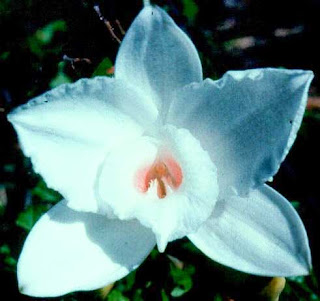Spanish Reed, Giant Reed Arundo donax,
giant cane, is one of the invasive alien plants that we have been eradicating
at Mount Moreland and other sites in the area. Spanish Reed Arundo donax is a
tall perennial cane which is mostly found growing in damp soils. Spanish Reed Arundo donax is one of several
species of grass called reeds. Spanish Reed Arundo donax is not to be confused with
our local reed Phragmites australis known as uMhlanga in Zulu.
 |
| Spanish Reed Arundo donax |
Spanish Reed Arundo donax is native to the
Mediterranean Basin and Middle East, Asia, and probably also parts of Africa
and the southern Arabian Peninsula. Spanish Reed Arundo donax has been widely
planted and has naturalized in most of the mild temperate, subtropical and
tropical regions of both hemispheres of the world mostly in wetlands and
riparian habitats.
Spanish Reed Arundo donax which is highly
invasive generally grows up to 6 meters; under ideal conditions it can exceed
10 meters. Spanish Reed Arundo donax resembles a very large common reed Phragmites
australis.
 |
| Spanish Reed Arundo donax that has been treated with our herbicide gel at Mount Moreland |
As already said Spanish Reed Arundo donax
is a highly invasive plant that is one the fastest-growing plants in the world growing
up to 10 centimeters in a day;
In South Africa Spanish Reed Arundo donax
has been given the Cat 1b invasive status.
Category 1b – Invasive species require
compulsory control as part of an invasive species control programm. Due to their
invasiveness, infestations may qualify to be placed under a government sponsored invasive species
management program. No permits will be issued to keep them.
 |
| Another view of Spanish Reed Arundo donax that has been treated with our herbicide gel at Mount Moreland |
In
South Africa Spanish Reed Arundo donax was identified as one of those established
invasive species that are most destructive. The need here is to run coherent
control program and that gains are maintained. Giant Reed, Spanish Reed Arundo donax readily
out-competes other vegetation, invades watercourses, road verges and moist
sites away from water.
A search on the internet makes it very clear
that Spanish Reed Arundo donax is difficult to control, this I have also established
from my own experience. Herbicide application to mature plants is rather ineffective.
Spanish Reed Arundo donax has dense growth and thick root masses which makes manual
or mechanical removal difficult, this method does a lot of damage to the
environment and is expensive to carry out. Deeply buried rhizome pieces re-sprout
and soil-disturbance may be severe. Follow-up after manual removal is
essential.
 |
| Spanish Reed Arundo donax that has been treated with our herbicide gel at Mount Moreland the result six months after treatment |
The application of herbicide is reasonably
effective if one cuts back Spanish Reed Arundo donax and allowing re-growth to
reach about one meter and then to spray with a glyphosate herbicide is the
method most recommended. Regular follow-up over a period of about three years
is required.
I together with Ecoman have developed a
method of eradication that is far more effective where we cut down Spanish Reed
Arundo donax then treat the re-growth with a herbicide gel that we have
developed.
 |
| Inspecting Giant Reed Arundo donax that we treated with a new improved herbicide gel last week, the results are promising |



